Lucknow, the capital city of Uttar Pradesh, has a rich history of beautiful buildings. When you walk through the old streets or plan to build a new house, you can see different styles of construction that tell the story of this great city.
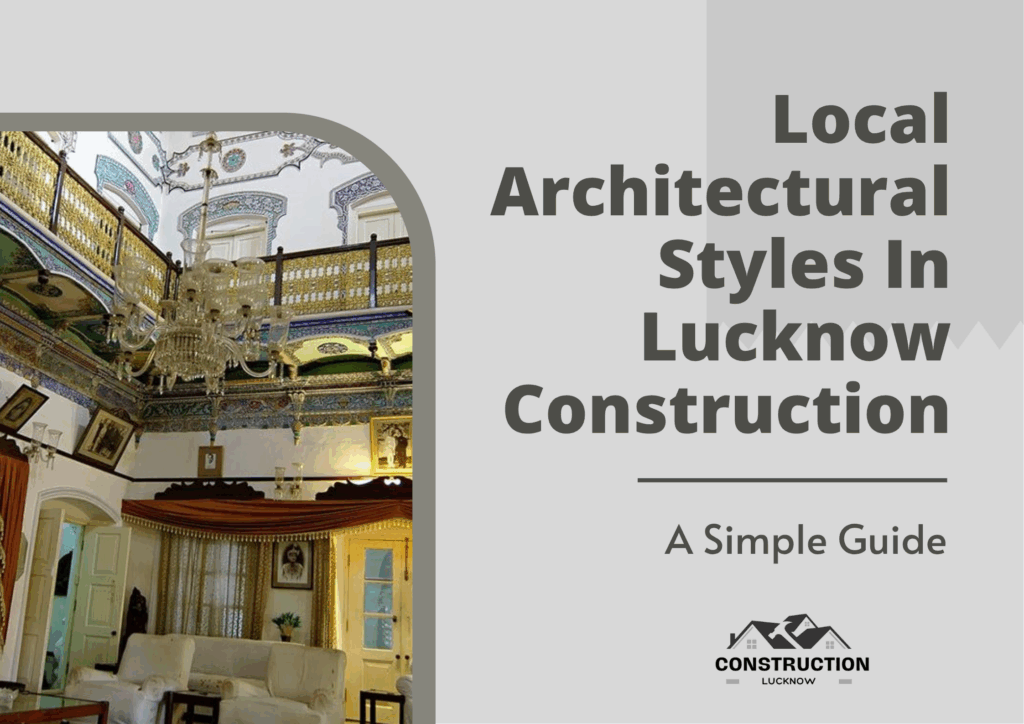
Each style has its own beauty and practical benefits that have helped people live comfortably for hundreds of years. Let’s get into the local architectural styles in Lucknow construction
The Royal Nawabi Style (1700s-1800s)
The Nawabs (राजा) of Awadh were the rulers who gave Lucknow its most famous building style. They brought ideas from Persia and mixed them with local Indian crafts to create something truly special.
What Makes Nawabi Buildings Special?
Lakhauri Bricks: These are very thin, flat bricks – about as thick as your thumb. They are reddish in color and much smaller than regular bricks. The Nawabs used these special bricks with lime mortar (चूना) to build strong walls without making them too heavy. You can still see these bricks in famous places like Bara Imambara and Rumi Darwaza.
Round Domes and Arches: Nawabi buildings have beautiful round domes that look like onions. The arches are curved and decorated, making the buildings look elegant and royal.
Special Decorations: Look for the twin fish symbol on many old buildings – this was the royal sign of the Nawabs. You will also see small umbrella-shaped decorations called chhatris (छतरी) on top of buildings.
Maze Design: The famous Bhul-Bhulaiya (भूल-भुलैया) or maze in Bara Imambara was built to confuse enemies and also to keep the building cool during hot summers.
Traditional House Style – Havelis (हवेली)
In the old markets like Chowk and Aminabad, you can find traditional houses called havelis. These homes were built by wealthy merchants and local families.
Features of Havelis:
Central Courtyard: Every haveli has a big open space in the middle called a courtyard (आंगन). This brings light and fresh air into all rooms. It also keeps the women’s area private from the street.
Wooden Beams: The roofs use strong wooden beams placed on thin brick walls. This makes the house light but strong.

Chhajjas and Jaalis: Chhajjas (छज्जा) are like small roofs that stick out from windows to block the sun and rain. Jaalis (जाली) are decorative screens with holes that let air pass through but give privacy.
Cool Plaster: The walls are covered with lime plaster that stays cool even in summer heat and doesn’t get damaged by monsoon rains.
British Colonial Style (1850s-1900s)
When the British took control of Lucknow in 1856, they brought their own building ideas but mixed them with local styles.
Famous Colonial Buildings:
Dilkusha Kothi: This looks like an English castle with square towers and straight walls – very different from the curved Nawabi style.
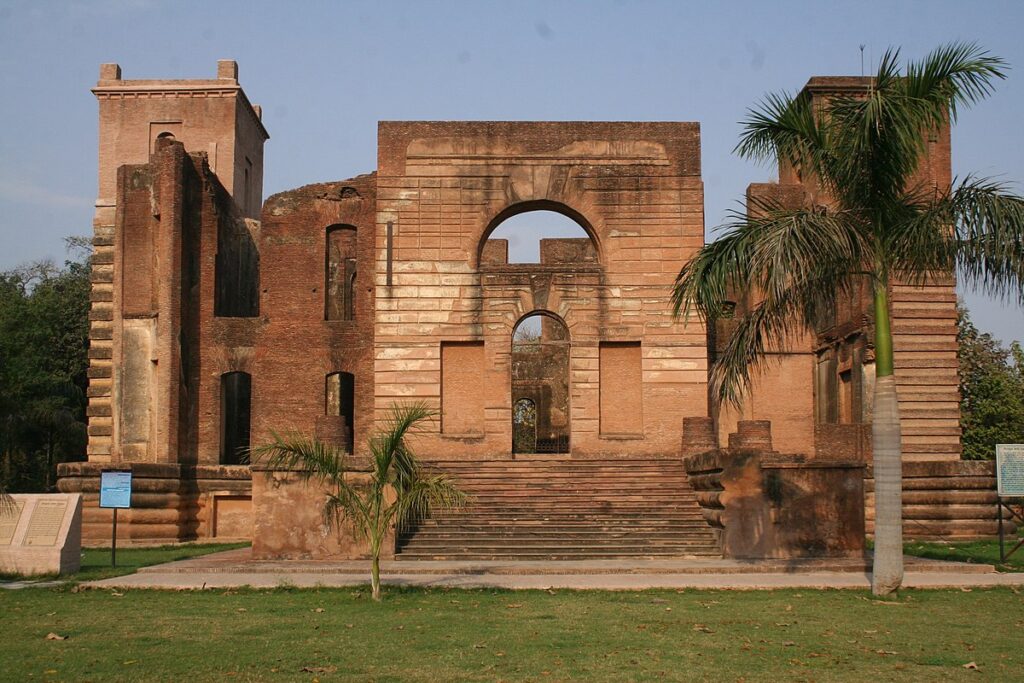
La Martiniere College: This school building mixes French castle design with Mughal domes. It sits high on a platform to stay safe from floods.
Clock Tower: Built in 1887, this 67-meter tall tower looks like Big Ben in London but has Indian-style arches.
New Materials: The British introduced cast iron for verandas and stucco (decorative plaster) covering for brick walls.
Modern Styles (1930s-1970s)
After India became independent, architects started using concrete and steel but still kept some traditional elements.
Art Deco Buildings: Government buildings in Hazratganj area have straight lines, geometric patterns, and tile decorations.
Mixed Materials: Builders used modern concrete frames but often added traditional Lakhauri brick facing to keep the local look.
Today’s Construction (2000s-Present)
Modern builders in Lucknow are going back to old techniques because they work better in the local climate and cost less to maintain.
What’s Popular Now:
Traditional Bricks: Hand-made Lakhauri bricks are being used again for walls and decoration. They are dipped in lime water to make them stronger.
Modern Courtyards: New houses have courtyards again, sometimes with glass roofs to bring in light while keeping out rain.
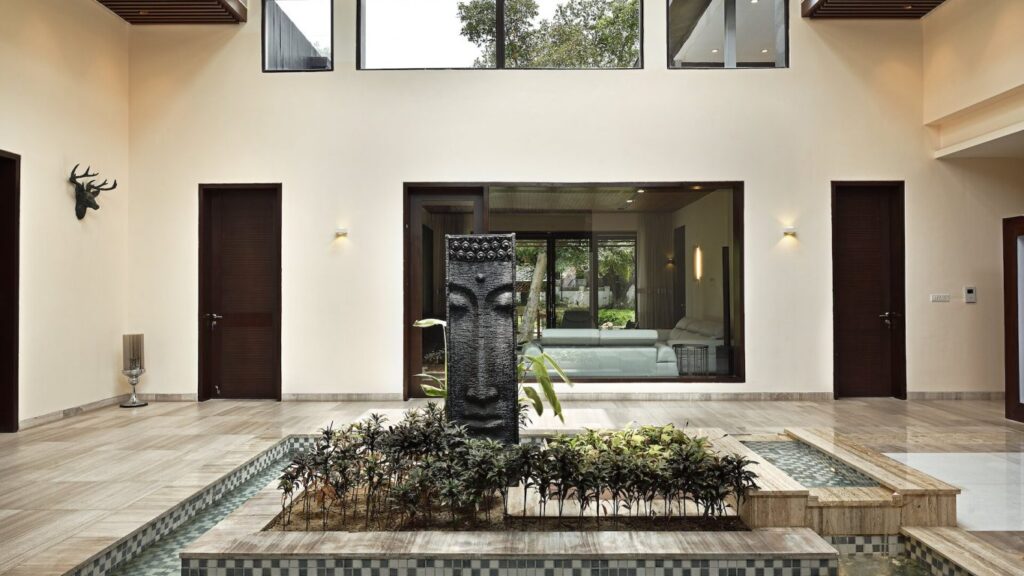
Natural Materials: Lime plaster and mud plaster are being used with modern concrete to make homes that stay cool naturally.
Energy Saving: Old techniques like thick walls, courtyards, and proper window placement help save electricity for cooling.
Building Materials Guide for Lucknow
If you want to build in Lucknow’s traditional style, here are the key materials:
- Lakhauri Bricks: Thin, flat bricks for walls and arches
- Surkhi-Lime Mortar: Mix of crushed brick powder and lime – better than cement for local climate
- Decorative Stucco: Plaster work with fish designs and flower patterns
- Teak Wood: Strong local wood for doors and windows
- Iron Jaalis: Metal screens for windows and balconies
Challenges Today
Old Lucknow’s narrow lanes (गली) and traditional houses face problems:
- High Land Prices: Owners want to tear down old havelis to build tall apartments
- Maintenance: Old buildings need special care and traditional skills
- Modern Needs: Traditional houses need updates for electricity, plumbing, and internet
Solution: Many people are converting old havelis into cafes, shops, and guest houses. This keeps the old buildings alive while making them useful for modern life.

Frequently Asked Questions
What are Lakhauri bricks, and why are they special?
Lakhauri bricks are very thin, flat bricks (लखौरी ईंट) that are about 25mm thick. They are special because they are lighter than normal bricks, help keep buildings cool, and can be used to make beautiful curved arches without heavy support.
Why do old Lucknow houses have courtyards?
Courtyards (आंगन) bring natural light and fresh air into the house. They also help keep the house cool by creating air circulation and providing privacy for family activities.
Can I use traditional building methods for a new house?
Yes! Many modern builders in Lucknow are using traditional techniques like Lakhauri bricks, lime plaster, and courtyards because they work well in the local climate and save energy costs.
What is the twin fish symbol seen on old buildings?
The twin fish (मही-मरातिब) was the royal symbol of the Nawabs of Awadh. You can see it on gates, palaces, and mosques built during the Nawabi period.
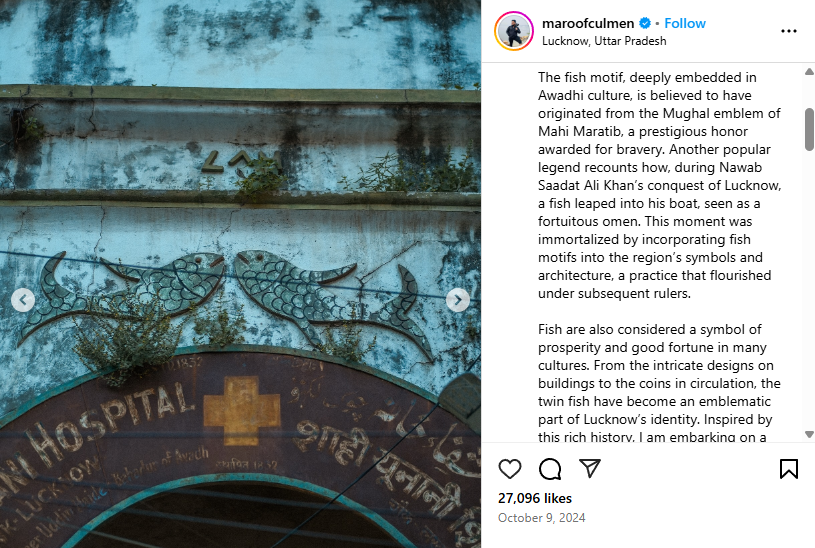
Are traditional materials expensive?
Hand-made Lakhauri bricks and lime mortar cost more upfront than modern materials, but they last longer and need less maintenance. They also help save money on air conditioning because they keep houses naturally cool.
What is a haveli?
A haveli (हवेली) is a traditional Indian house built around a central courtyard. In Lucknow, havelis were usually homes of wealthy merchants and had beautiful carved doors, jaali windows, and decorated walls.
How can old buildings be saved from demolition?
The best way is adaptive reuse – converting old havelis into cafes, boutique hotels, art galleries, or offices. This keeps the traditional architecture alive while making the buildings economically useful.
What is Bhul-Bhulaiya?
Bhool Bhulaiya (भूल-भुलैया) means “maze” in Hindi. It’s the famous labyrinth on the upper floor of Bara Imambara, designed to confuse intruders and also help cool the building through air circulation.
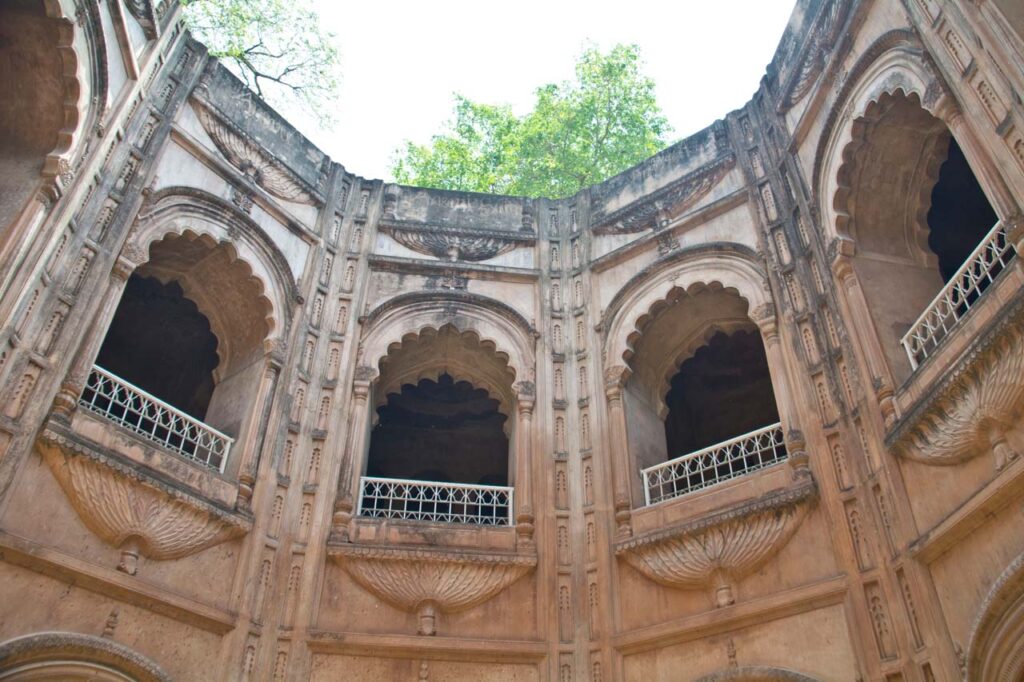
Final Thoughts
Lucknow’s architecture is like a beautiful story written in stone, brick, and lime. Each building style – from the royal Nawabi palaces to the simple family havelis, from British colonial structures to modern eco-friendly homes – adds its own chapter to this ongoing tale.
The city’s builders, both old and new, have always found ways to create beautiful spaces that work well in the local climate. The thin Lakhauri bricks, cooling courtyards, and decorative jaalis are not just pretty to look at – they are smart solutions that have kept people comfortable for centuries.
Today, as Lucknow grows rapidly, the challenge is to honor this rich building tradition while meeting modern needs. The revival of traditional techniques like lime plaster and courtyard design shows that old wisdom still has value in our modern world.
Whether you are planning to build a new home, renovate an old haveli, or simply want to understand the beautiful buildings around you, remember that Lucknow’s architecture teaches us an important lesson: the best buildings are those that respect both the past and the present, creating spaces that are not only beautiful but also practical and sustainable.
As you walk through the streets of this historic city, take a moment to appreciate how each building – from the grandest Imambara to the humblest haveli – contributes to Lucknow’s unique character. In preserving and adapting these architectural traditions, we ensure that future generations will continue to enjoy the beauty and wisdom of Lucknow’s built heritage.
Lucknow ki tehzeeb (लखनऊ की तहज़ीब) – the culture of Lucknow – lives not just in its food and manners, but also in its timeless architecture that continues to inspire builders and dreamers alike.
